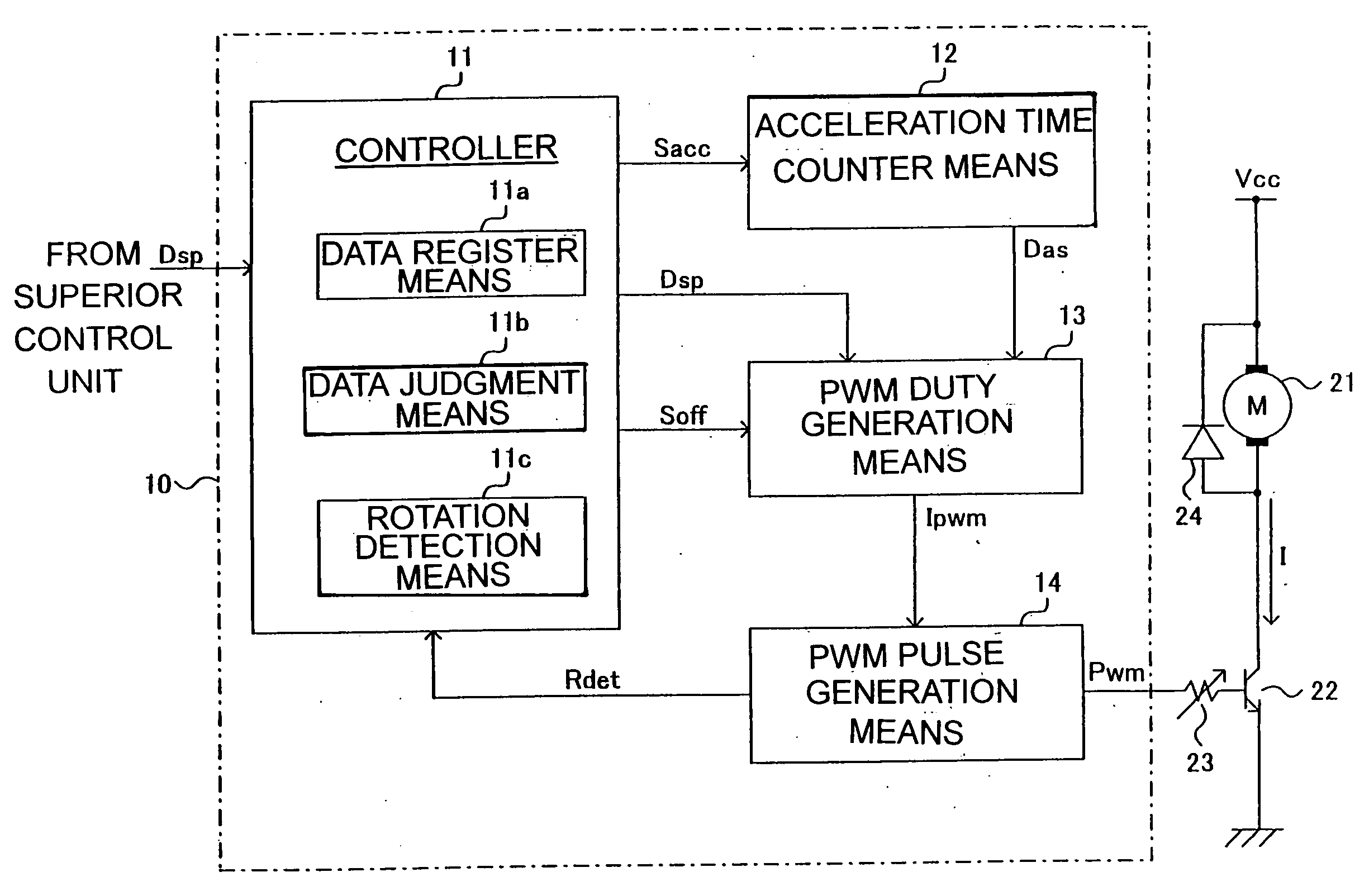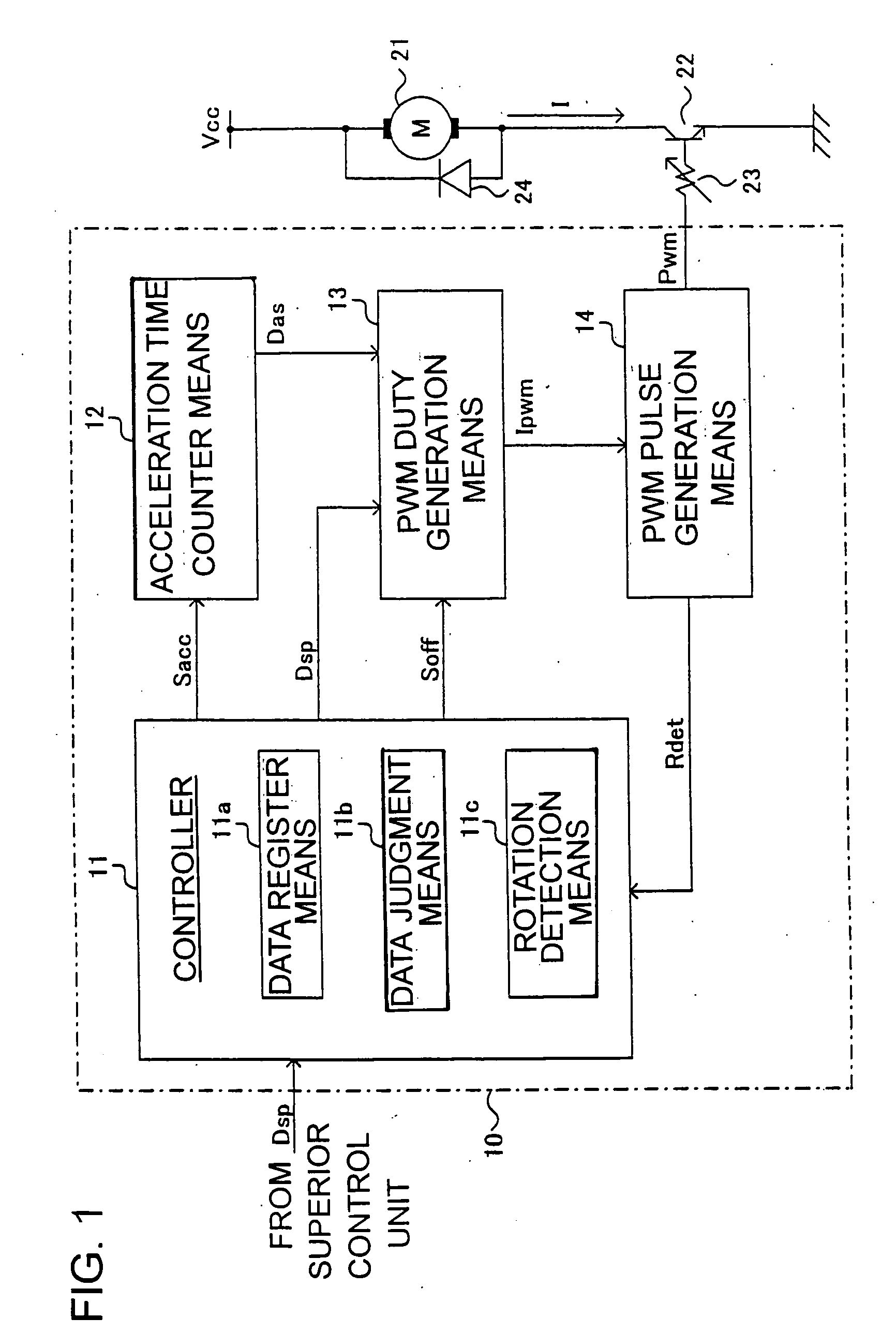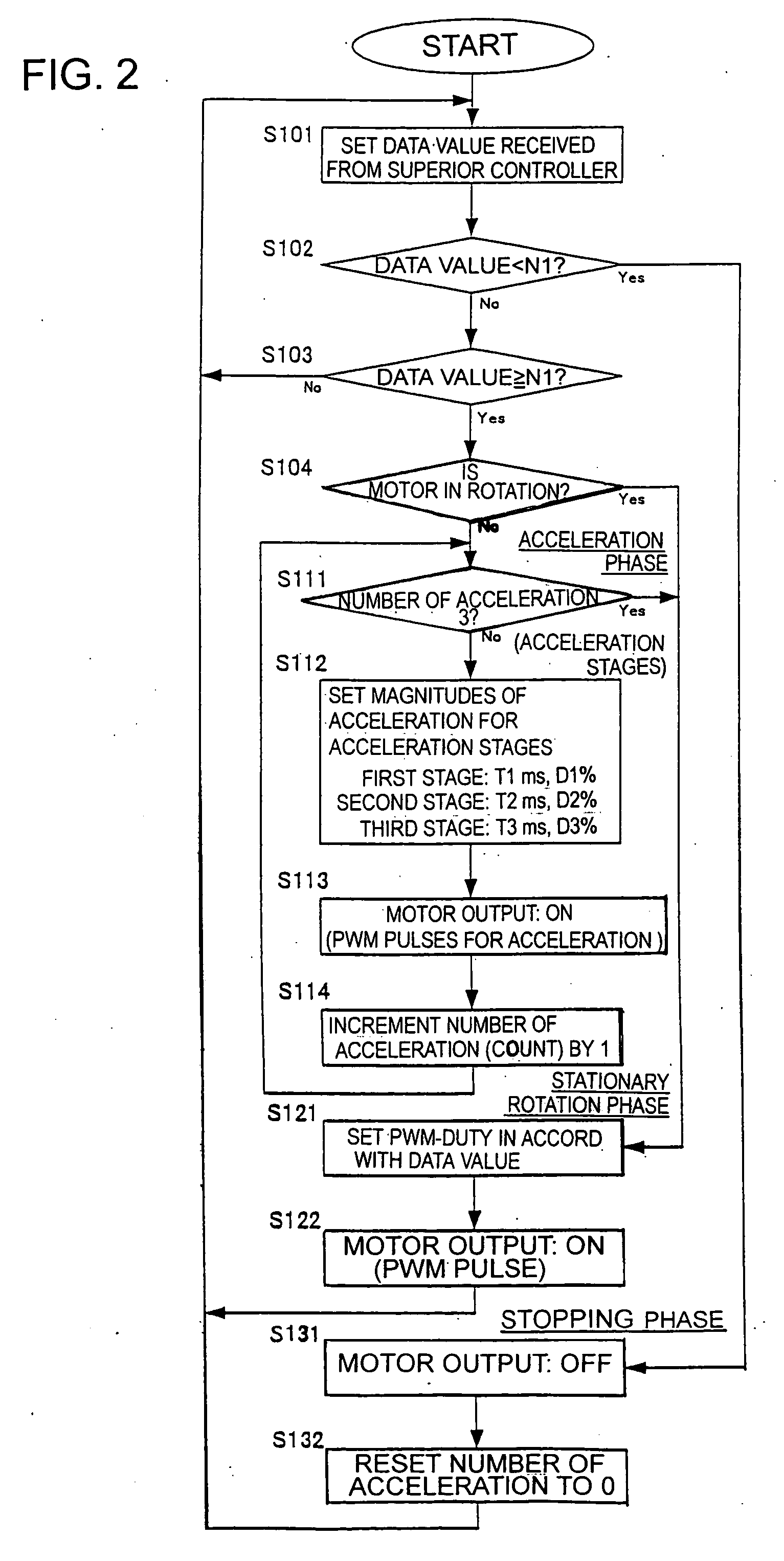Dc motor drive unit
a dc motor and drive unit technology, applied in the direction of dc motor speed/torque control, motor/generator/converter stopper, control system, etc., can solve the problems of increasing the cost of the drive circuit, limiting the controllable speed range of the motor, and the minimum permissible rotational speed of the motor can be reduced, so as to improve the start-up capability of the dc motor and widen the controllable speed range after the startup
- Summary
- Abstract
- Description
- Claims
- Application Information
AI Technical Summary
Benefits of technology
Problems solved by technology
Method used
Image
Examples
Embodiment Construction
[0030] An inventive DC motor drive unit will now be described in detail by way of example with reference to the accompanying drawings. FIG. 1 is a block diagram showing a circuit arrangement of a DC motor drive unit 10 in accordance with one embodiment of the invention. FIG. 2 is a flowchart describing the operation of the circuit shown in FIG. 1. FIG. 3 shows an exemplary operative condition of the DC motor drive circuit shown in FIGS. 1 and 2.
[0031] The DC motor drive unit of FIG. 1 is controlled by an open loop control system. A DC motor 21 and a switching transistor 22 are connected between a power supply voltage Vcc and the ground. The switching transistor 22 has a base, which is supplied with PWM pulses Pwm from the motor drive control circuit 10 to turn on and off the switching transistor 22. An adjustment resistor 23 is a variable resistor for adjusting the base current of the transistor 22. The resistor 23 is provided as needed. A free wheel diode 24 is provided to restore...
PUM
 Login to View More
Login to View More Abstract
Description
Claims
Application Information
 Login to View More
Login to View More - R&D
- Intellectual Property
- Life Sciences
- Materials
- Tech Scout
- Unparalleled Data Quality
- Higher Quality Content
- 60% Fewer Hallucinations
Browse by: Latest US Patents, China's latest patents, Technical Efficacy Thesaurus, Application Domain, Technology Topic, Popular Technical Reports.
© 2025 PatSnap. All rights reserved.Legal|Privacy policy|Modern Slavery Act Transparency Statement|Sitemap|About US| Contact US: help@patsnap.com



